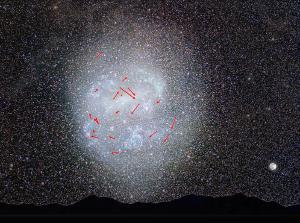Blog
Fixed Point
20 February 2014
 NASA/ESA
NASA/ESAQuasars are among the most energetic things in the universe, and are intense sources of radio waves and visible light. They typically have large redshifts, and are therefore very far away. Although they can be thousands of times brighter than the entire Milky Way galaxy, the source of their energy is relatively small, a fraction of our galaxy’s size. For a long time the source of a quasar’s power was a mystery, and models developed to explain them were controversial. We now know that they are driven by black holes in the center of galaxies, and are part of a larger class of objects known as active galactic nuclei, or AGNs.
While quasars are interesting in their own right, they are also used as an astronomical tool. Because they are both very bright and very distant, they can be used as reference points when measuring the positions of celestial objects. With large radio telescope arrays we can measure the position of quasars to within a milliarcsecond. Since quasars are also bright at visible wavelengths, astronomical images that include a quasar are then known to a similar precision.
This technique was used recently to measure the motion of stars in the Large Magellanic Cloud. With images from the Hubble telescope, the positions of stars in the LMC were measured relative to various quasars in the field of view. Over time this allowed for the proper motion of stars to be determined. What was found is that the stars in the LMC rotate around the central region with a period of about 250 million years. Interestingly, that’s also about the same period as stars in our own galaxy.